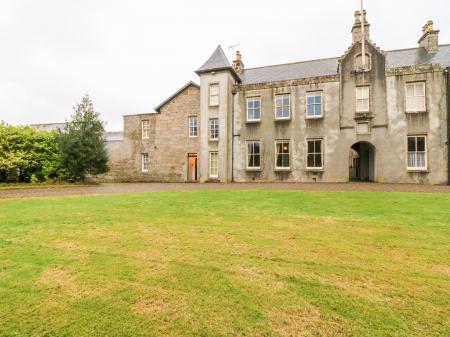
The most famous feature at Pitmedden are the parterres, made up of over 5 miles of boxwood hedges, carefully trimmed to create intricate formal designs. There are 6 parterres, arranged on three levels, and contained within high stone walls that enclose 7 acres. Beyond the walled garden, the estate extends to cover 100 acres, and there are pleasant woodland walks and a special wildlife garden area to enjoy.
At the top of the garden is Pitmedden House, a Grade B listed building that now acts as the visitor reception, tearoom, and shop. This is the third house to stand on this spot; the first two burned down, and the current house was erected in 1807.
In addition to the formal parterres, Pitmedden has an array of fruit trees producing over 80 varieties of fruit. Apple trees - including a pair of Bramley apple trees over 100 years old - produce over 2.5 tonnes of fruit each year which is sold to help the running costs of keeping the garden open.
Outside the formal garden area, several outbuildings have been turned into a museum of farming life, with a large collection of agricultural tools and displays on what life was like for farm workers in days gone by.
Our visit
Pitmedden is a delightful garden; my tastes don't always run to the formal style, but Pitmedden is a wonderful example of a formal terraced garden; the parterres are each unique, with very attractive designs that constantly surprised me as I recognised what each design was supposed to represent.
Some of the hedges are clipped to represent Latin verse, and some in the colours of a Scottish flag, to name just two. I really enjoyed wandering about Pitmedden, and it is fascinating to think that a style once so popular in high society has been handed down to us almost intact, after over 3 centuries.
Pitmedden is very close to two other historic properties; Tolquhon Castle and Haddo House.












 We've 'tagged' this attraction information to help you find related historic attractions and learn more about major time periods mentioned.
We've 'tagged' this attraction information to help you find related historic attractions and learn more about major time periods mentioned.




